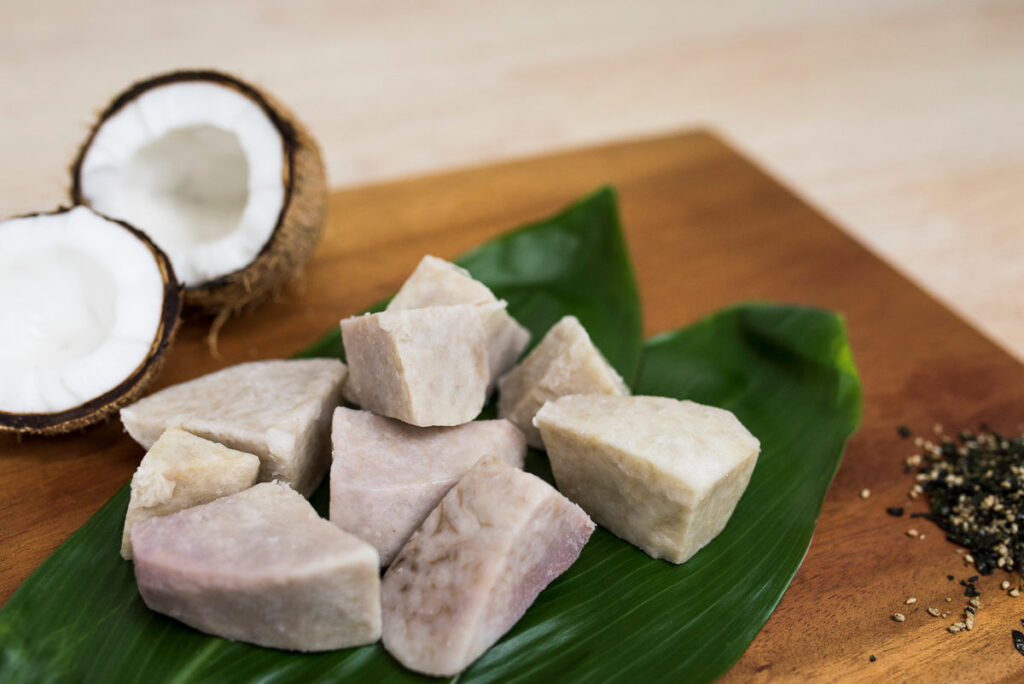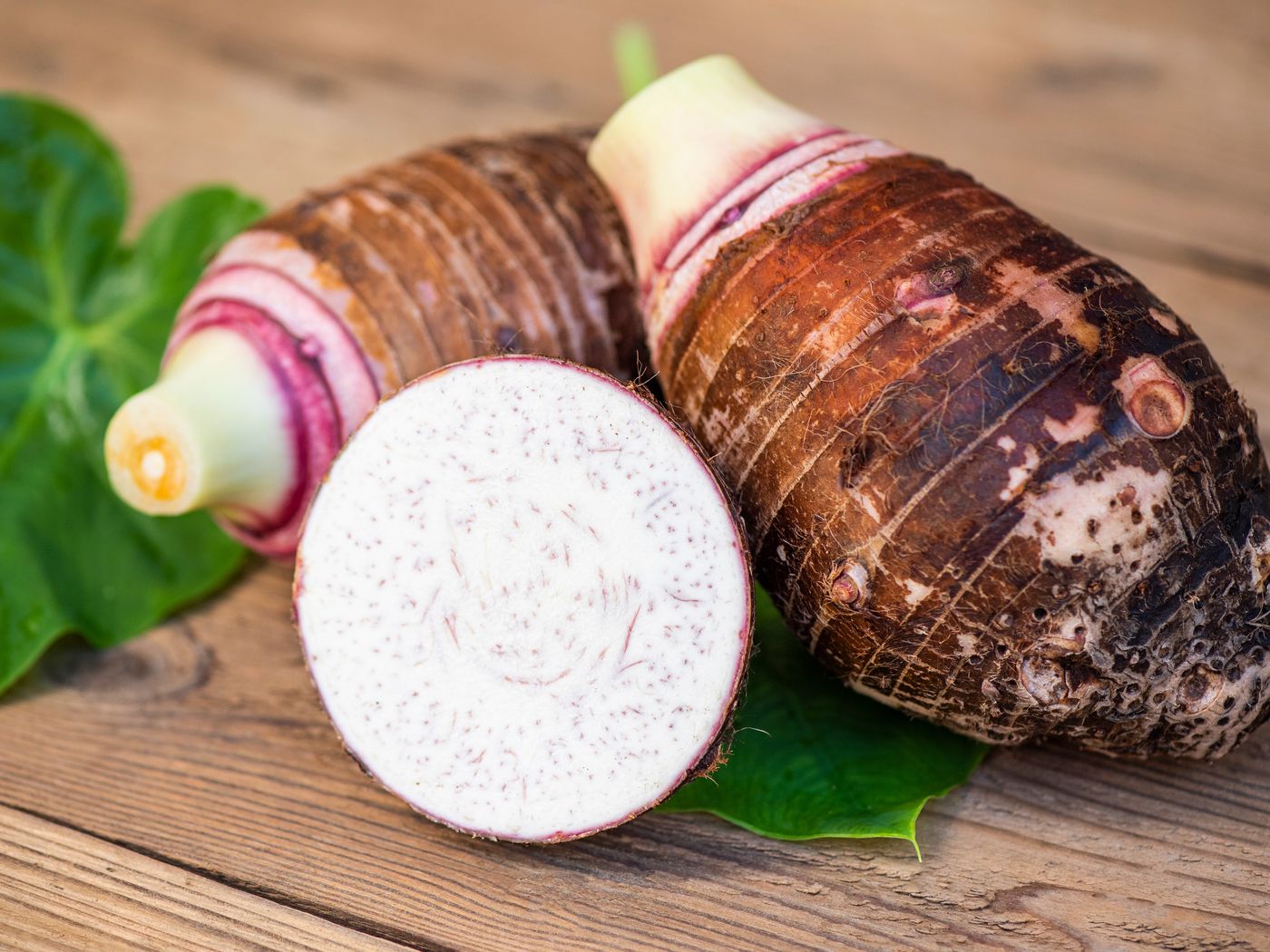Imagine being transported to the beautiful islands of Hawaii, where a rich and vibrant culture awaits you. As you delve into the local cuisine, you can’t help but notice the recurring presence of a humble root vegetable called taro. In this article, we will explore the significance of taro in Hawaiian gastronomy and learn about its integral role in both the island’s food and culture. From traditional dishes to cultural symbolism, taro is a fascinating ingredient awaiting your discovery. So, grab a seat and prepare to embark on a culinary journey like no other.
The History of Taro in Hawaiian Cuisine
Taro holds a significant place in Hawaiian cuisine and culture. This versatile and nutritious root vegetable has been a staple in the Hawaiian diet for centuries and continues to play an important role in traditional and modern dishes. Its rich history and cultural significance make it a beloved ingredient in Hawaiian gastronomy.
Origins of Taro in Hawaii
Taro, known as kalo in Hawaiian, is believed to have originated in Southeast Asia and was brought to Hawaii by Polynesian voyagers over a thousand years ago. This crop quickly adapted to the Hawaiian environment and became a vital part of the local food system. Taro thrived in the wetland areas, known as lo‘i, which were specifically designed and constructed for its cultivation.
Cultivation Techniques in Ancient Hawaii
In ancient Hawaii, the cultivation of taro was a highly skilled process that required extensive knowledge and expertise. The lo‘i were carefully engineered terraced ponds that utilized a complex irrigation system. The cultivation process involved flooding the lo‘i with freshwater, which not only provided moisture for the plants but also prevented weed growth. The rich volcanic soil and favorable climate of Hawaii contributed to the optimal growth of taro plants.
Traditional Uses of Taro in Hawaiian Cooking
Taro was not only a staple food but also had a range of uses in Hawaiian cooking. The corms, or the underground stems of the taro plant, were used to make poi, the traditional Hawaiian staple. Poi was created by pounding the cooked corms into a smooth and creamy consistency, which was then fermented for several days to develop its distinctive tangy flavor. Taro leaves were also utilized in various dishes, such as laulau, where they were used to wrap and cook pork or fish with other ingredients.
Taro Varieties in Hawaiian Gastronomy
The richness and diversity of taro varieties in Hawaiian gastronomy highlight the importance of this crop in Hawaiian culture. Over time, different taro varieties have been cultivated, each with its unique characteristics and flavors.
Traditional Hawaiian Taro Varieties
Hawaiian cuisine traditionally featured several taro varieties, each with its distinct culinary applications. Some notable traditional taro varieties include:
- Bun, which had a slightly sweet flavor and was often used in making poi.
- Manini, known for its starchy texture and nutty flavor, commonly used in baking and making desserts.
- Lehua maoli, a taro variety with reddish corms and an earthy taste, often used in making taro chips.
Introduction of New Taro Varieties
With the passage of time, new taro varieties have been introduced, expanding the culinary possibilities with this versatile crop. Farmers and researchers have worked together to develop hybrid varieties that offer improved yields, disease resistance, and enhanced flavors. These new taro varieties have contributed to the evolution of Hawaiian cuisine and added variety to traditional dishes.
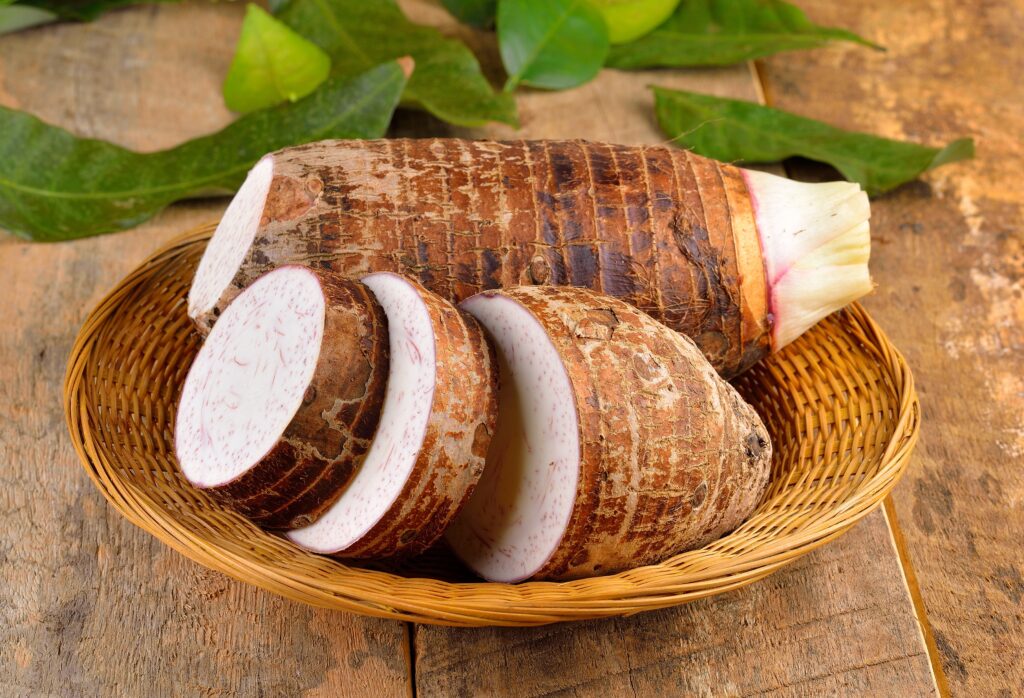
Harvesting and Processing Taro
Proper harvesting and processing techniques are essential for preserving the flavors and nutritional value of taro. Both traditional and modern methods play a vital role in ensuring the quality of taro-based products.
Traditional Taro Harvesting Techniques
In ancient Hawaii, taro was harvested by hand using simple tools such as ko‘i (digging sticks) and ‘o‘o (digging pick). The plants were carefully uprooted from the lo‘i and the corms were separated from the leaves and stems. This traditional method required skill and care to avoid damaging the crop.
Modern Taro Farming Methods
Modern taro farming methods have incorporated technological advancements to improve efficiency and productivity. Farmers now use mechanical equipment to aid in the process of planting, harvesting, and processing taro. Automation has significantly reduced the physical labor involved, allowing for larger-scale cultivation and greater output.
Processing Taro into Poi and Other Food Products
Taro undergoes several processing steps to transform it into a variety of food products. After harvesting, the corms are washed, peeled, and cooked. They are then pounded and fermented to make poi, the beloved staple of Hawaiian cuisine. Additionally, taro corms are used to create other food products like taro chips, taro burgers, and taro pudding, showcasing the versatility and adaptability of this root vegetable.
Nutritional Value of Taro
Taro is not only celebrated for its taste and versatility but also for its impressive nutritional profile. It is a rich source of vitamins, minerals, and dietary fiber.
Vitamins and Minerals in Taro
Taro is packed with essential vitamins and minerals that contribute to overall health and wellbeing. It is a significant source of vitamin A, vitamin C, and B vitamins such as thiamine, riboflavin, and niacin. Additionally, taro contains an abundance of minerals like potassium, magnesium, iron, and calcium, which are vital for various bodily functions.
Health Benefits of Consuming Taro
In addition to its nutritional value, taro offers numerous health benefits. The high fiber content of taro aids in digestion and promotes a healthy gut. The complex carbohydrates present in taro provide sustained energy and help regulate blood sugar levels. Taro is also known for its anti-inflammatory properties, thanks to the presence of antioxidants that help combat oxidative stress and reduce inflammation in the body.
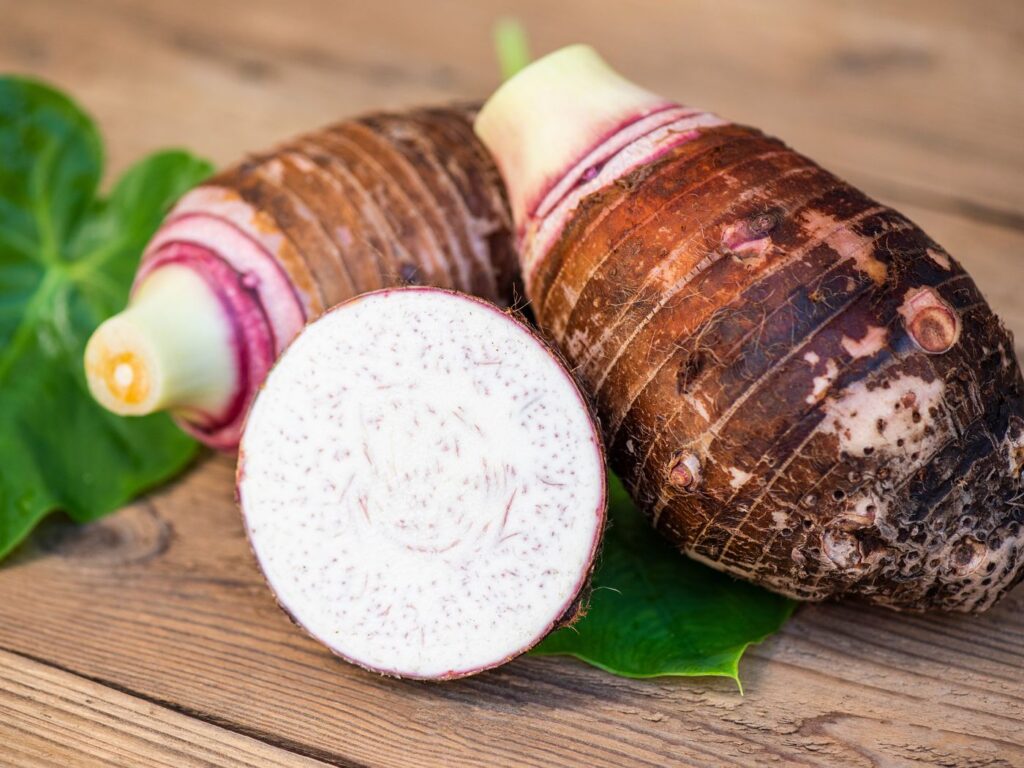
Traditional Hawaiian Dishes featuring Taro
Taro is a key ingredient in several traditional Hawaiian dishes, each celebrating the unique flavors and textures of this root vegetable.
Poi: The Staple Food of Hawaii
Poi holds a place of honor as the staple food of Hawaii. This traditional Hawaiian dish is made by mashing cooked and fermented taro corms into a smooth paste. Poi is a versatile accompaniment that can be paired with savory dishes or enjoyed on its own. Its slightly tangy flavor and creamy consistency make it a beloved component of Hawaiian cuisine.
Laulau: Taro Leaves and Pork
Laulau is a classic Hawaiian dish that showcases the versatility of taro leaves. It involves wrapping seasoned pork or fish with taro leaves, and often, other ingredients such as butterfish, chicken, or vegetables. The bundles are then steamed to perfection, resulting in tender, flavorful, and aromatic parcels of goodness.
Kulolo: Taro Pudding
Kulolo is a traditional Hawaiian dessert made with grated taro, coconut milk, and sugar. The mixture is wrapped in taro leaves and steamed until it reaches a rich, caramelized consistency. The result is a sweet and luscious pudding that highlights the natural flavors of taro and coconut.
Haupia: Coconut Milk and Taro Dessert
Haupia is a popular Hawaiian dessert that combines the flavors of coconut milk and taro. Often served as a smooth and creamy pudding, haupia is made by simmering coconut milk with taro, sugar, and other ingredients. It is then chilled until set, creating a delectable treat that is enjoyed across the islands.
Modern and Fusion Taro Creations
Taro has also found its place in modern and fusion cuisine, where it is used to create innovative and exciting dishes that blend traditional and contemporary flavors.
Taro Chips and Snacks
Taro chips have gained popularity as a healthier alternative to traditional potato chips. Thinly sliced taro is deep-fried or baked until crispy, resulting in a satisfying snack with a delightful crunch. Taro chips often come in a variety of flavors, including salted, spiced, or seasoned with herbs, catering to a range of taste preferences.
Taro Burgers and Sandwiches
Taro burgers and sandwiches offer a unique twist to classic fast food favorites. Taro patties are made by combining grated taro with various seasonings and binders, then grilled or fried until golden brown. These innovative creations provide a flavorful and nutritious alternative to traditional meat-based burgers and sandwiches.
Taro Pancakes and Waffles
Taro pancakes and waffles have become a breakfast favorite, adding a burst of flavor and color to the morning meal. Grated taro is incorporated into the batter, resulting in fluffy and flavorful pancakes or waffles. Topped with fruits, syrup, or even savory ingredients, these tantalizing treats are a delightful start to the day.
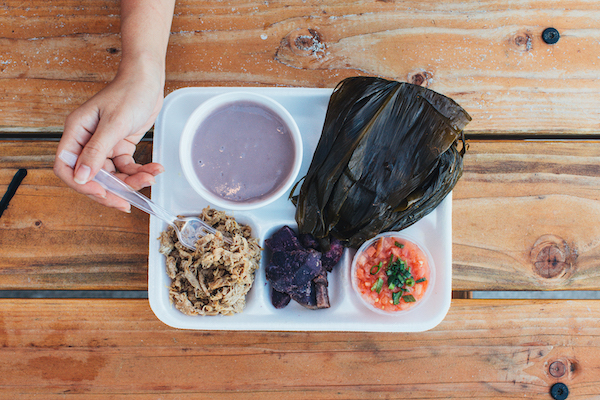
Cultural Significance of Taro
Taro holds a deep cultural significance in Hawaiian society, symbolizing the values of community, sustainability, and respect for the land.
Taro as a Symbol of Aloha Spirit
Taro is often regarded as a symbol of the Aloha Spirit, representing the essence of Hawaiian culture and hospitality. Its cultivation and consumption foster a sense of community and unity, as the process of preparing and sharing taro-based meals often involves a collective effort, reinforcing the bonds between family and friends.
Taro in Hawaiian Legends and Traditions
Taro holds a prominent place in Hawaiian legends and traditions. Many stories and myths revolve around taro, depicting its importance in the creation of Hawaii’s land and people. Taro is often associated with divine beings and considered a sacred crop, intertwining mythology and daily life in Hawaiian culture.
Taro as a Sustainable Food Source
Taro’s ability to thrive in wetland environments and its low environmental impact make it a sustainable food source. Its cultivation promotes the preservation of natural resources, such as water and soil, while contributing to the local economy. Taro’s sustainability aligns with the traditional Hawaiian concept of mālama ‘āina, or caring for the land, emphasizing the importance of sustainable agriculture practices.
Taro Festivals and Events in Hawaii
Hawaii celebrates the significance of taro through various festivals and events dedicated to this beloved crop. These gatherings provide opportunities to learn about taro cultivation, taste traditional dishes, and appreciate the cultural heritage associated with this versatile root vegetable.
Annual Taro Festivals
Taro festivals, such as the Pū‘alili ‘Āina Taro Festival and the East Maui Taro Festival, are held annually to highlight the importance of taro in Hawaiian cuisine. These events bring together farmers, chefs, and the community to showcase different taro varieties, traditional cooking methods, and innovative dishes. Visitors can experience hands-on activities, watch cooking demonstrations, and indulge in a variety of taro-based delicacies.
Culinary Competitions and Demonstrations
Culinary competitions and demonstrations are also organized during taro festivals, providing a platform for local chefs to showcase their creativity and expertise. These events highlight the versatility of taro and inspire new ways of incorporating it into Hawaiian gastronomy. From taro-based desserts to savory dishes, the culinary competitions celebrate the artistry and skills of the chefs while creating an engaging experience for festival-goers.
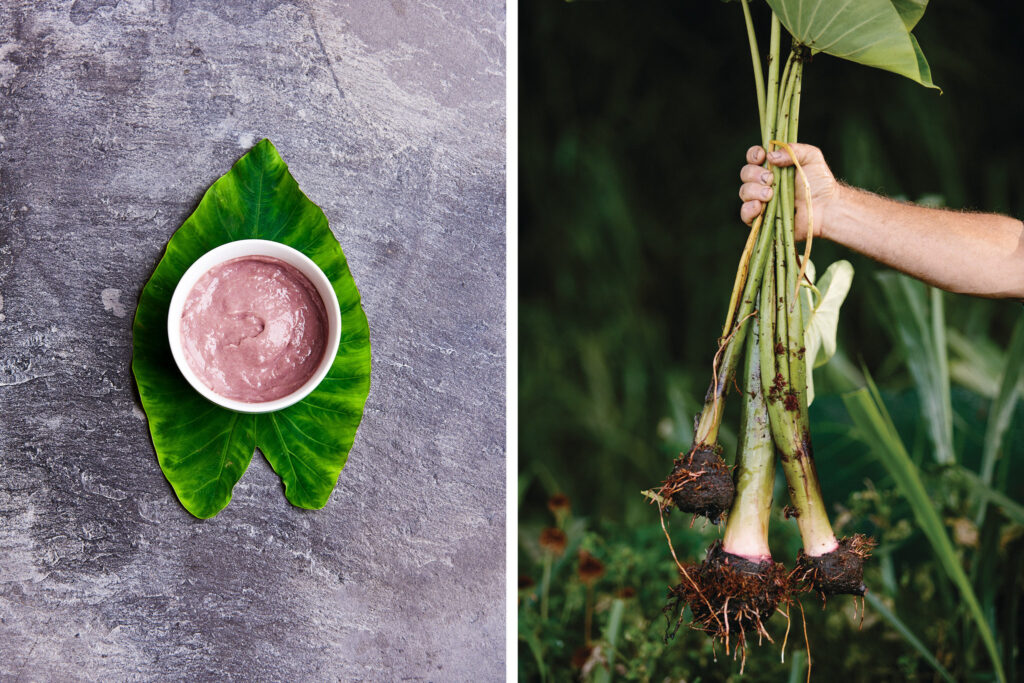
Challenges and Preservation Efforts
Despite its cultural significance, taro cultivation faces several challenges. However, various initiatives and organizations are working tirelessly to preserve and promote the cultivation of this cherished crop.
Threats to Taro Cultivation
Taro cultivation faces threats from various factors, including agricultural diseases and pests, water scarcity, and urbanization. Diseases such as the Taro Leaf Blight and pests like the taro beetle can devastate taro crops, causing significant losses. Additionally, the growing demand for land for urban development has led to the conversion of taro-growing areas into housing and commercial spaces, further endangering traditional taro cultivation.
Initiatives for Taro Conservation
Numerous initiatives have been established to combat the challenges facing taro cultivation. Organizations like the Taro Security and Purity Task Force are actively working to develop disease-resistant taro varieties and promote sustainable farming practices. Additionally, educational programs raise awareness about the importance of taro as a cultural heritage and the need to protect it. By fostering partnerships between farmers, researchers, and policymakers, these initiatives strive to ensure the continued thriving of taro in Hawaiian gastronomy.
Future Outlook for Taro in Hawaiian Gastronomy
Taro continues to evolve and adapt to meet the demands of a changing culinary landscape. The future of taro in Hawaiian gastronomy looks promising, with new innovations and a growing appreciation for its cultural and culinary heritage.
New Innovations in Taro Farming and Cuisine
Advancements in farming techniques and culinary creativity are driving new innovations in taro farming and cuisine. From sustainable farming practices to novel ways of incorporating taro into fusion dishes, the possibilities are endless. These innovations not only add excitement to Hawaiian gastronomy but also contribute to the preservation and promotion of taro as a cultural icon.
Promoting Taro as a Cultural and Culinary Heritage
Efforts are being made to raise awareness and appreciation for taro as a cultural and culinary heritage of Hawaii. Educational programs, cultural events, and collaborations between chefs and farmers are crucial in sharing the story of taro and its significance in Hawaiian cuisine and culture. By highlighting its traditional and modern applications, taro is poised to continue captivating both locals and visitors, making it an integral part of Hawaiian gastronomy for generations to come.
In conclusion, the history and cultural significance of taro in Hawaiian cuisine cannot be overstated. This remarkable root vegetable connects the present to the past, showcasing the traditions, flavors, and values of the Hawaiian people. From traditional dishes to contemporary creations, taro continues to inspire and delight, making it a cherished ingredient in Hawaiian gastronomy. As efforts to preserve and promote taro cultivation increase, the future outlook for this humble root vegetable in Hawaiian cuisine shines brightly.
